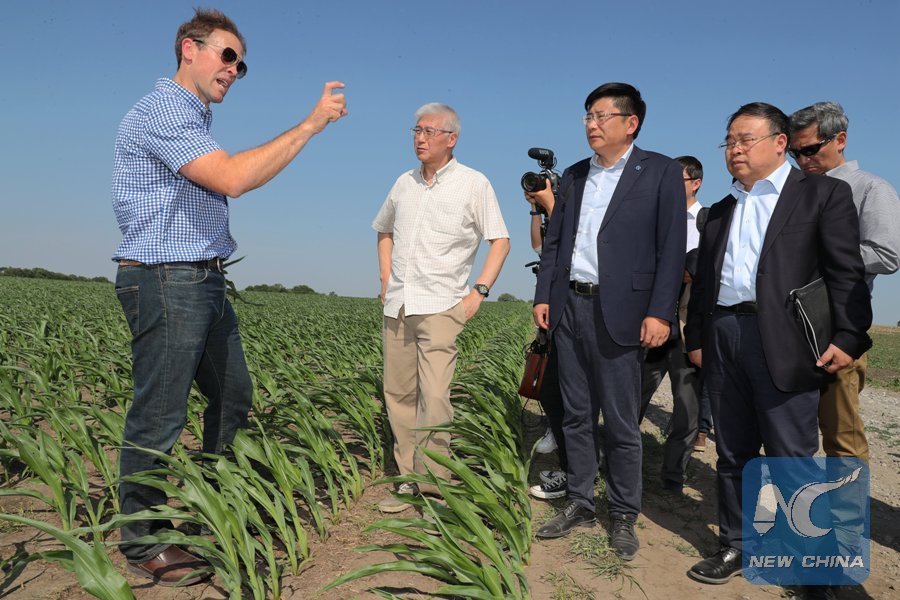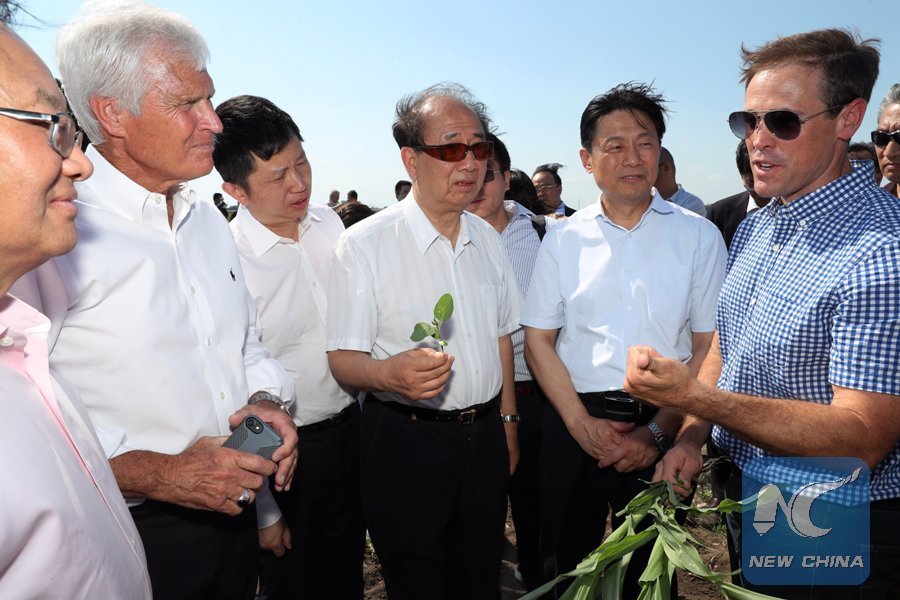DES MOINES, the United States, June 12 (Xinhua) -- The Kimberleys have toured thousands of miles over the past few months to China to make preparation for launching a model farm for growing soybean, where roughly two-thirds of U.S. soybean exports go every year.

Grant Kimberley (L), son of Kimberley Farm owner, introduces crop planting and agricultural techniques used by his farm in Des Moines, Iowa, the United States, June 11, 2017.(Xinhua/Wang Ping)
The Kimberleys are a typical Midwestern farm family in Des Moines, central Iowa. Rick Kimberley and his son Grant are operating around 4,000 acres (1617 hectares) of farmland in the suburb of Des Moines with a house, grain bins and machine sheds.
As witnesses to the booming agricultural ties between China and Iowa, the Kimberley family is now not only exporting soybeans to China, but also introducing their advanced farming technology to the largest soybean export market for the United States.
The model farm which will be fashioned after the Kimberleys' one is set to be built next year in north China's Hebei Province, a sister province of Iowa. The Kimberleys are traveling to China frequently over the past few months to prepare for the kickoff of the demonstration farm.
According to Grant, the Kimberleys are working with local government and development companies in Hebei to get the demonstration farm operating as soon as possible.
"That demonstration farm would showcase new techniques and practices (of agriculture), and things maybe down the road could be utilized by Chinese agriculture as well, because China needs to modernize and continues to improve the efficiency of farms," said Grant.
"Our farm has been one of the examples how Chinese farms down the road could modernize their operations and improve their efficiency," Grant added.

Grant Kimberley(R), son of Kimberley Farm owner, introduces crop planting and agricultural techniques used by his farm in Des Moines, Iowa, the United States, June 11, 2017.(Xinhua/Wang Ping)
As an example for the deepening China-U.S. economic ties, the Kimberleys' farm has drawn interest of a group of Chinese researchers who paid a visit to the farm in recent days.
"China-U.S. relations are not only about the government-level exchanges, but more importantly lie in the exchanges between people from both countries. The close people-to-people exchanges could further contribute to the development of bilateral relations," said Zhao Qizheng, former director of China's State Council Information Office, after he visited the Kimberleys' farm.
It's the first time for Chinese think tank researchers to hold a direct talks with American farmers, said Wei Jianguo, China's former vice minister of commerce, who also took the tour at the Kimberleys' farm.
"I'm very impressed by American farmers' strong emphasis on the importance of stable bilateral economic relationship," said Wei.
In 2016, bilateral trade between China and the United States reached over 524 billion U.S. dollars, surging over 200 times over the past 38 years since China and the United States established diplomatic relations in 1979. U.S. exports to China supported over 1.8 million jobs in the United States in 2015.
According to a report released by the U.S.-China Business Council, the U.S.-China trade relationship actually supports roughly 2.6 million jobs in the United States across a range of industries, including jobs that Chinese companies have created in America.
As the Chinese economy transits into the modern age, there is ample reason to believe U.S. exports can grow even more rapidly, and U.S. firms can harvest significant revenues from their investments, said the report.
















